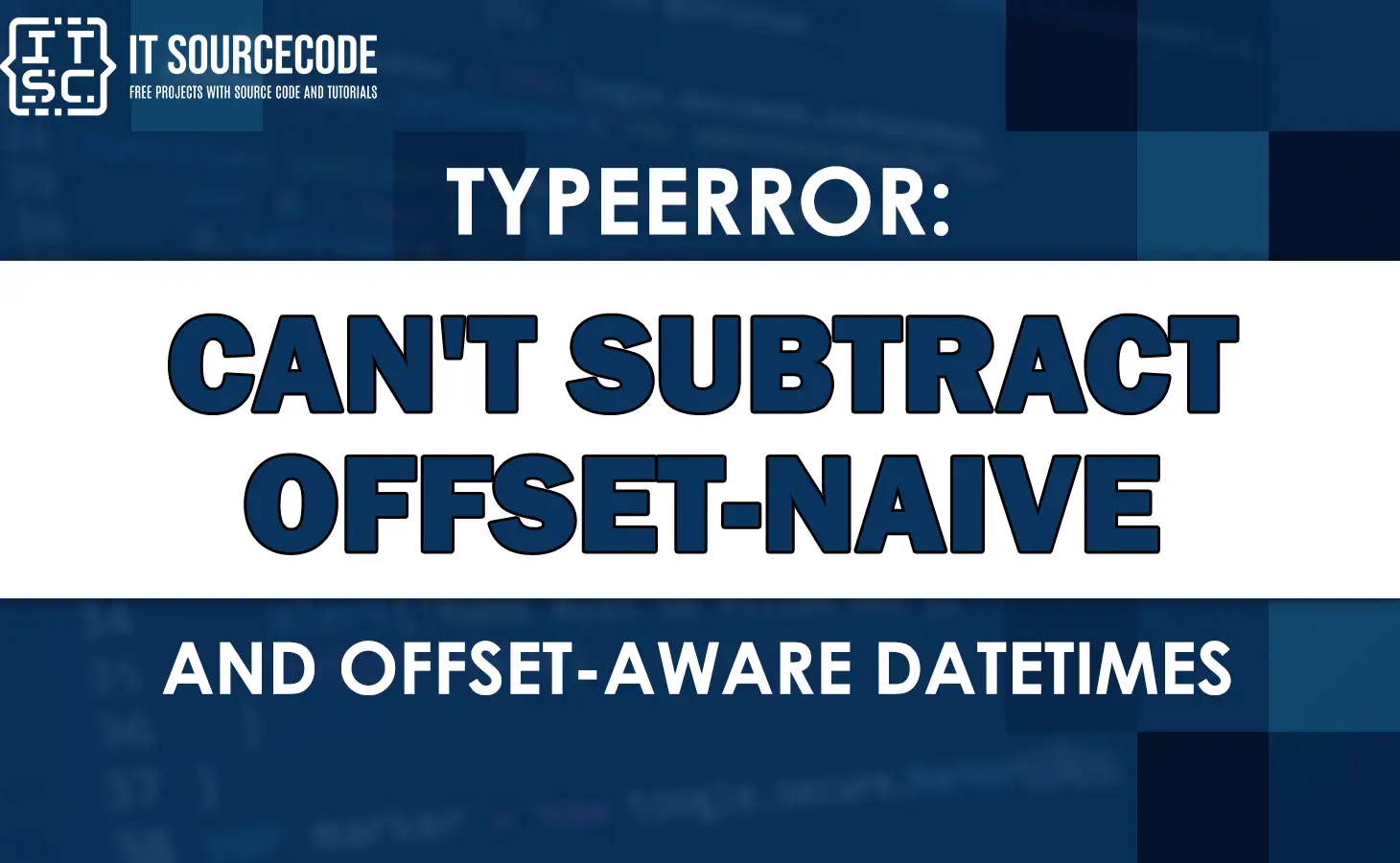Encountering errors like typeerror: can’t subtract offset-naive and offset-aware datetimes can be frustrating.
It is especially difficult when you are new to programming. However, don’t worry, as you are not alone.
In this article, we will help you solve this error and give you a brief discussion about it.
First, let us learn what this error is and why it occurs.
What is typeerror: can’t subtract offset-naive and offset-aware datetimes?
The typeerror: can’t subtract offset-naive and offset-aware datetimes is an error message in Python.
This error occurs when we attempt to subtract an offset-naive datetime object from an offset-aware datetime object, or the other way around.
This happens because an offset-aware datetime object has information about the time zone, while an offset-naive datetime object does not.
Here is an example code that triggers this error:
import datetime
a_dt = datetime.datetime.now(datetime.timezone.utc)
n_dt = datetime.datetime.utcnow()
diff = a_dt - n_dtError:
Traceback (most recent call last):
File "C:\Users\path\spath\sProject\main.py", line 4, in <module>
diff = a_dt - n_dt
~~~~~^~~~~~
TypeError: can't subtract offset-naive and offset-aware datetimesTypeerror: can’t subtract offset-naive and offset-aware datetimes – SOLUTION
Here are the possible solutions you can use to solve the typeerror: can’t subtract offset-naive and offset-aware datetimes:
1. Convert or change the offset-naive datetime object into an offset-aware datetime object with the same time zone.
Example:
import datetime
a_dt = datetime.datetime.now(datetime.timezone.utc)
n_dt = datetime.datetime.utcnow()
diff = a_dt - n_dt.replace(tzinfo=datetime.timezone.utc)2. Convert or change the offset-aware datetime object into an offset-naive datetime object by removing timezone information.
Example:
import datetime
a_dt = datetime.datetime.now(datetime.timezone.utc)
n_dt = datetime.datetime.utcnow()
diff = a_dt.replace(tzinfo=None) - n_dtAnother example:
from datetime import datetime, timezone, timedelta
n_dt = datetime(2023, 4, 11, 10, 30, 0)
tz_offset = timezone(timedelta(hours=1))
a_dt = datetime(2023, 4, 11, 10, 30, 0, tzinfo=tz_offset)
na_dt = a_dt.replace(tzinfo=None)
t_diff = n_dt - na_dtAs shown in the example solutions above, we used the replace() method for both solutions.
Tips to avoid getting Typeerrors
The following are some tips to avoid getting type errors in Python.
- Avoid using the built-in data types in Python in the wrong way.
- Always check or confirm the types of your variables.
- Be clear and concise when writing code.
- Handle the error by using try-except blocks.
- Use the built-in functions of Python if needed.
FAQs
Offset-naive and offset-aware are datetime objects that both represent date and time.
Their only difference is that an offset-aware datetime object has information about the time zone, while an offset-naive datetime object does not.
Example of an offset-naive datetime object:datetime(2023, 4, 11, 10, 30, 0)
Example of an offset-aware datetime object:datetime(2023, 4, 11, 10, 30, 0, tzinfo=timezone(offset=timedelta(hours=2)))
Typeerror is an error in Python that arises when an operation or function is applied to a value of an improper type.
This error indicates that the data type of an object isn’t compatible with the operation or function that is being used.
Python is one of the most popular programming languages.
It is used for developing a wide range of applications.
In addition, Python is a high-level programming language that is used by most developers due to its flexibility.
Conclusion
In conclusion, the typeerror: can’t subtract offset-naive and offset-aware datetimes can be solved by adding timezone info to the offset-naive datetime object.
Aside from that, you can also solve this by removing timezone information from offset-aware datetime object.
That is all for this tutorial, IT source coders!
We hope you have learned a lot from this. Have fun coding.
Thank you for reading! 😊

